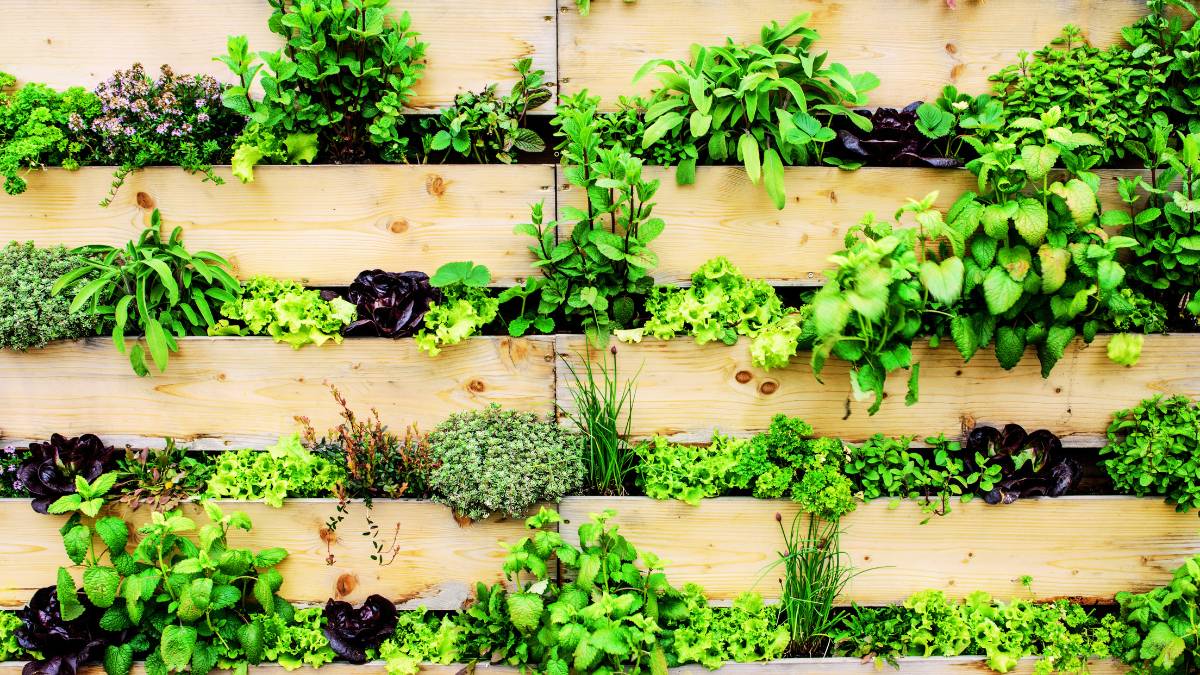Last Updated on May 27, 2024 by Kravelv Spiegel
In the realm of landscaping design, a fascinating trend is taking root—vertical gardens are becoming increasingly popular for their ability to transform bland walls and compact spaces into vibrant green havens. As urban living spaces become more constrained, the need to maximize space while maintaining aesthetic appeal has led to the rise of vertical gardens.
In this guide, we’ll explore the burgeoning trend of vertical gardening and how it’s reshaping landscaping in Calgary, offering innovative solutions for bringing nature closer to home.
Understanding the Appeal of Vertical Gardens
Vertical gardens, also known as living walls or green walls, offer a plethora of benefits that have captured the imagination of designers, homeowners, and urban planners alike. Beyond their striking visual impact, vertical gardens serve as multifunctional elements in outdoor spaces. They provide natural insulation, reduce ambient noise levels, improve air quality, and create habitats for beneficial insects and birds. Moreover, vertical gardens offer a creative solution for maximizing space in urban environments where traditional garden plots are scarce.
Principles of Vertical Garden Design
Creating a successful vertical garden requires careful consideration of several key principles:
1. Plant Selection:
Choose plants that thrive in vertical environments, considering factors such as light exposure, soil moisture, and temperature fluctuations. Opt for species with shallow root systems, such as ferns, succulents, and trailing vines, which are well-suited for growing vertically. Select plants with varying textures, colours, and growth habits to create visual interest and diversity in your vertical garden.
2. Structural Support:
Ensure that your vertical garden has a sturdy support structure to bear the weight of the plants and growing medium. Depending on the size and complexity of your living wall, you may need to install a framework made of materials such as metal, wood, or recycled plastic. Incorporate irrigation systems, such as drip lines or reservoirs, to deliver water to the plants efficiently and prevent water runoff.
3. Maintenance and Care:
Regular maintenance is essential for keeping your vertical garden healthy and thriving. Monitor soil moisture levels, prune overgrown plants, and inspect for pests and diseases regularly. Consider installing a monitoring system to track environmental conditions, such as temperature and humidity, and make adjustments to ensure optimal growing conditions for your plants.
Expert Tips for Creating Stunning Vertical Gardens
Now that we’ve covered the principles of vertical garden design, let’s explore some expert tips for creating stunning vertical gardens:
1. Choose the Right Location:
Select a suitable location for your vertical garden based on factors such as sunlight exposure, wind exposure, and accessibility for maintenance. Consider installing your living wall on a south-facing or west-facing wall to maximize sunlight exposure and promote plant growth.
2. Start Small:
If you’re new to vertical gardening, start with a small-scale project to gain experience and confidence before tackling larger installations. Experiment with different plant combinations, growing techniques, and irrigation systems to find what works best for your space and climate.
3. Incorporate Design Elements:
Integrate design elements such as planters, trellises, and decorative features into your vertical garden to enhance its visual appeal and functionality. Consider using contrasting colours, textures, and materials to create visual interest and focal points within your living wall.
4. Consider Maintenance Needs:
Choose low-maintenance plants and irrigation systems to minimize the time and effort required to care for your vertical garden. Opt for drought-tolerant plants and self-watering systems to reduce water consumption and ensure the long-term health and vitality of your living wall.
Transforming Outdoor Spaces with Vertical Gardens
In conclusion, the rise of vertical gardens represents a paradigm shift in landscaping design, offering innovative solutions for maximizing space and enhancing the beauty of outdoor environments. Whether installed in residential yards, commercial buildings, or public spaces, vertical gardens have the power to transform ordinary walls into living works of art, bringing nature closer to home in a sustainable and aesthetically pleasing way. With careful planning, thoughtful design, and a commitment to sustainability, you can create stunning vertical gardens that elevate outdoor spaces and inspire awe and admiration for years to come, enriching lives and connecting communities with the natural world.
Embracing the principles of vertical gardening fosters a deeper appreciation for the environment and encourages a harmonious coexistence with nature, fostering a sense of stewardship and responsibility for our planet’s precious resources. So, whether you’re a seasoned gardener or a novice enthusiast, consider adding a vertical garden to your outdoor space and join the growing movement towards sustainable urban greening.

